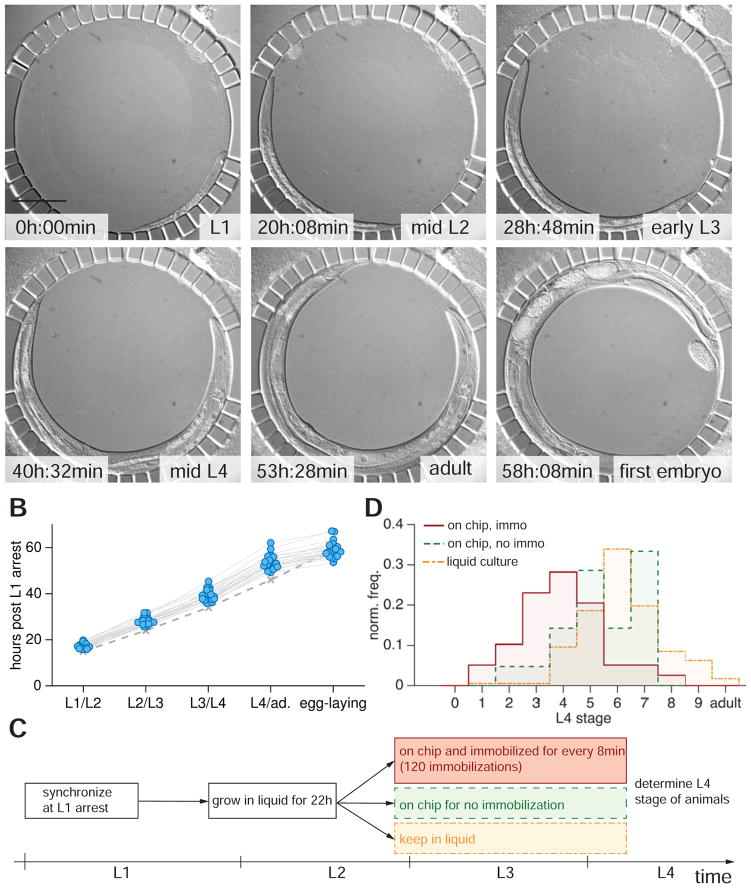Figure 2.
Developmental timing is only weakly perturbed with repeated immobilization. (A) DIC micrographs of a developing larva in the worm chamber at different developmental stages between L1 (upper left) to the beginning of egg laying (lower right). Scale bar, 100 μm. Contamination at top right corner does not clog or alter device functionality. (B) Molt times for 30 animals grown in the device from L1 arrest at 20°C. Solid gray lines connect time points of individual animals. Dashed gray line indicates data from (Hirsh et al., 1976) under standard conditions on NGM petri dishes. Average time of L1 molt in device: 17h20min (std. dev. σ=1h, 15h on NGM petri dishes (Hirsh et al., 1976)); L2 molt: 28h (σ=1h40min; 24h (Hirsh et al., 1976)); L3 molt: 39h (σ=2h15min; 39h (Hirsh et al., 1976)); L4 molt: 53h30min (σ=3h46min; 34h (Hirsh et al., 1976)); Egg-laying: 59h (σ=3h20min, 59–60h (Hirsh et al., 1976)). (C) Experimental protocol to assess effects of repeated immobilization on developmental speed. (D) Histogram of L4 developmental stages after 38 h of development post L1 arrest. Red, mounted into the device after 22 h and immobilized and DIC-imaged every 8 min (120 immobilizations, n=29). Green, mounted into the device after 22 h, DIC-imaged but not immobilized (n=31). Yellow trace: animals kept in liquid culture for 38 h (n=177).

